Stop Your Fibre from Pulling Away While You’re Spinning
In an effort just to get yarn on the bobbin, some new spinners (and even seasoned ones) place too much reliance on their wheel’s tensioning. Not only does this relinquish the spinner’s control over their end yarn, but a too-strong take-up can also cause the yarn and fibre to break away and pull out of the spinner’s hands while the wheel is in motion.
If this rings familiar to you, your first instinct might be to add more twist to your spin via a speed increase or a pulley decrease, but this won’t solve the real problem: the wheel’s twist energy is getting cut off before it can make its way to where you need it, and no amount of additional treadling is going to solve that issue.
Instead, you’ll need to better manage your wheel’s tensioning so twist can cross the drafting zone without tearing your fibre or too-fragile yarn from your hands. Understanding the (simple!) physics of constant motion and the flyer wheel, be it a traditional treadle wheel or e-Spinner, will help you make better adjustments to your wheel going forward. You’ll also start to better understand twist distribution and the many ways of manipulating its buildup.
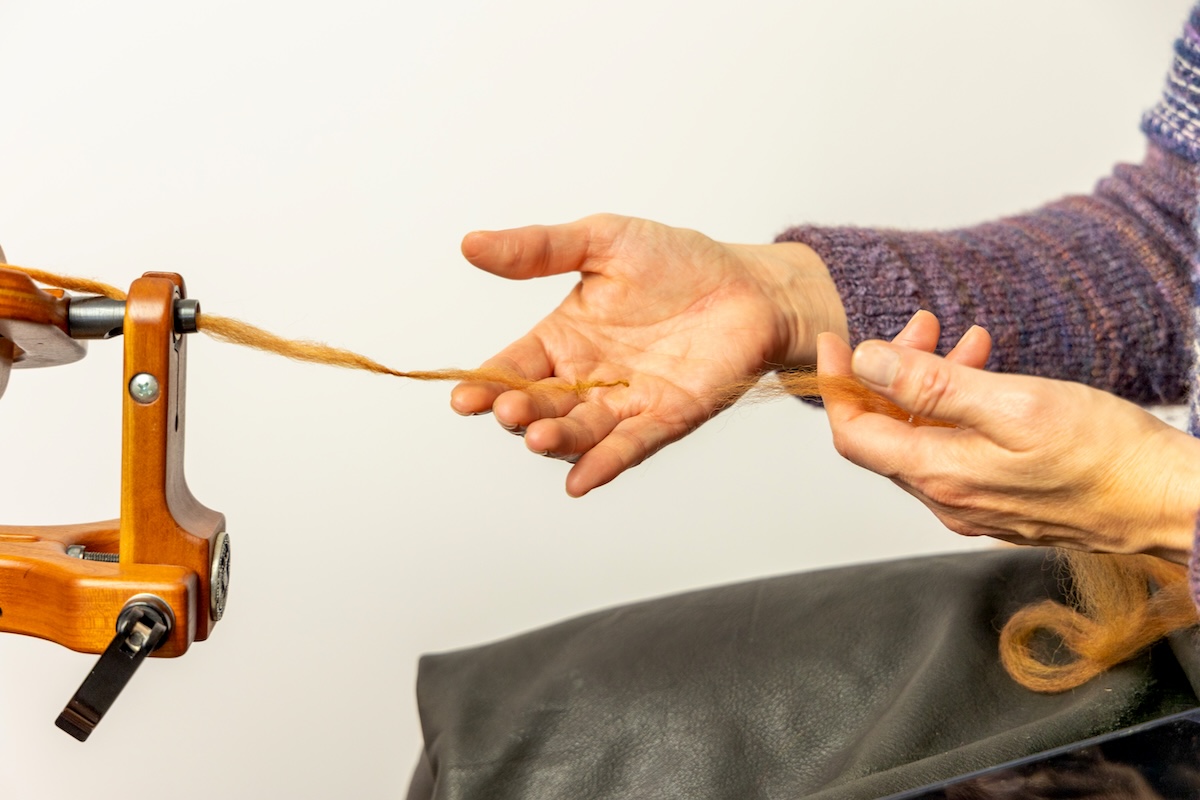
Understanding Continuous Spinning and Tensioning
When your wheel is in motion, your fibre supply, drafting triangle, and newly spun yarn are engaged in a continuous action that causes a dual, simultaneous competition for the fibre inside your drafting zone. The two contenders are 1) the tension, or take-up, on the strands you’ve drafted out with your wheel hand and 2) the torsion, or the rate of rotational insertion, of the twist as it enters these drawn-out strands to make yarn.
Since take-up is constant while a flyer wheel is in motion, this simultaneous tugging on both your fibre supply and your newly spun yarn necessitates appropriate tensioning of the wheel combined with a controlled spinning draw and rate of speed to ensure that a consistent, stable singles yarn winds onto your bobbin. No component should overpower another, or the whole ecosystem (and thus, your yarn/fibre) suffers. Your two hands need to keep up with the treadle or motor speed and the pull of the wheel while concurrently staying ahead of the twist and each new point of contact (more on that below), regardless of your draw, directing whether twist is inserted between your hands in a woollen style or outside the drafting zone in a worsted style. Too much (or too little) tension throws this state out of balance, leading to a too-harsh pull-in of your fibre or a weakened singles, respectively.
Tension’s purpose in a flyer wheel is one of physics. It’s needed to slow down your bobbin or flyer—depending on your wheel’s drive system—to engage differential rotational speed or that lag needed to ensure that your flyer and bobbin rotate at different speeds so your yarn winds onto the bobbin. It’s meant to be used in conjunction with other means of spin control like whorl differentials and drive band drag, in a nuanced manner and not on its own. Your tension should not be set so tight that its very strength pulls the yarn (or broken fibre) up and out of your hands before you’ve made stable singles, especially when there are so many other ways to finesse twist accumulation.
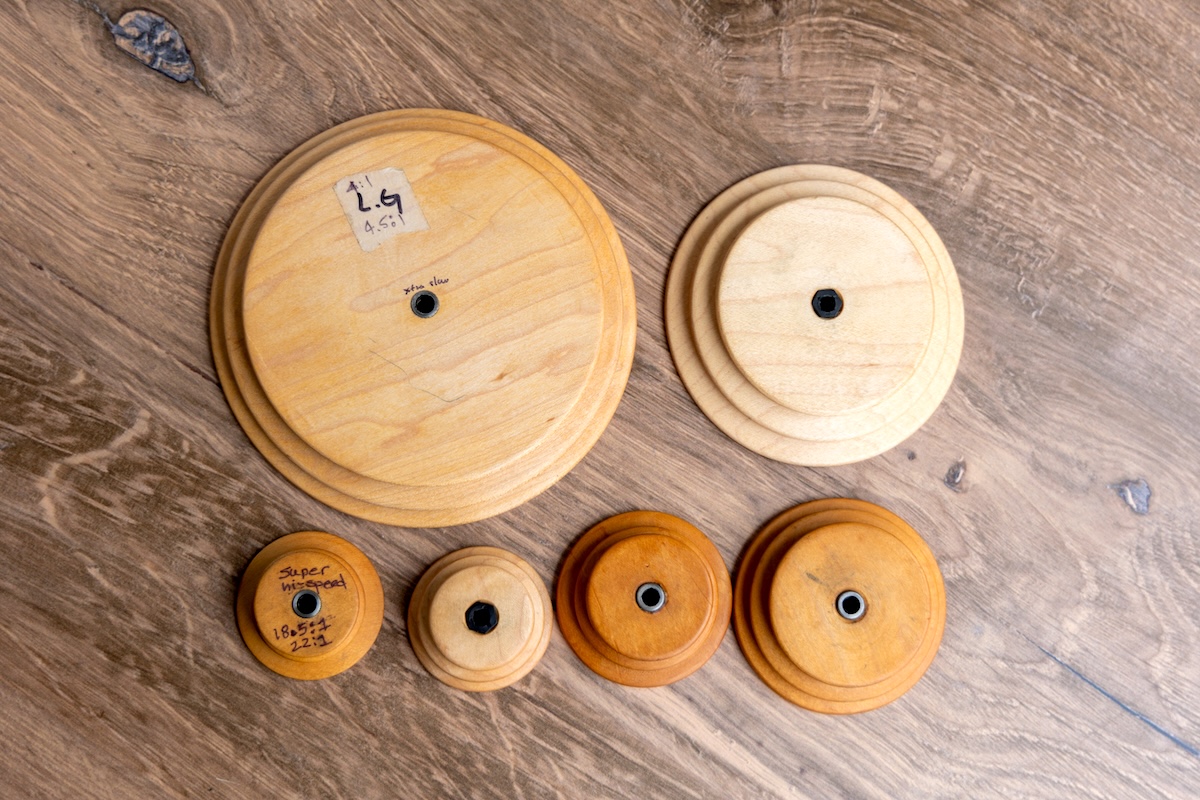
Tips to Stop Fibre from Pulling from Your Hands
Know & Prepare Your Fibre
- Staple length. Before making any major adjustments to your wheel, check the staple length of the fibre you’re spinning by pulling a staple length from one end of your fibre (if spinning from combed top) or a staple length from a sample of your fleece, checking its length and laying it down on your thigh for reference. It’s possible that you’re drafting your staple out too far as you spin, causing breakage in the fibre before twist can enter. Proper drafting length is anywhere from 1/3 to 3/4 of the staple length, not more, and engaging even slightly too much pull from your brake band could hasten the yarn or fibre into breaking and pulling away before full twist insertion.
- Consider your fibre. Work with a well-fluffed fibre. Compacted wool is really tough to draft out, making torsion that much more challenging. Consider carding your fibre, steaming it open, or doing an easy tease and whip to return your braid back to its original fluffy glory—if not better.
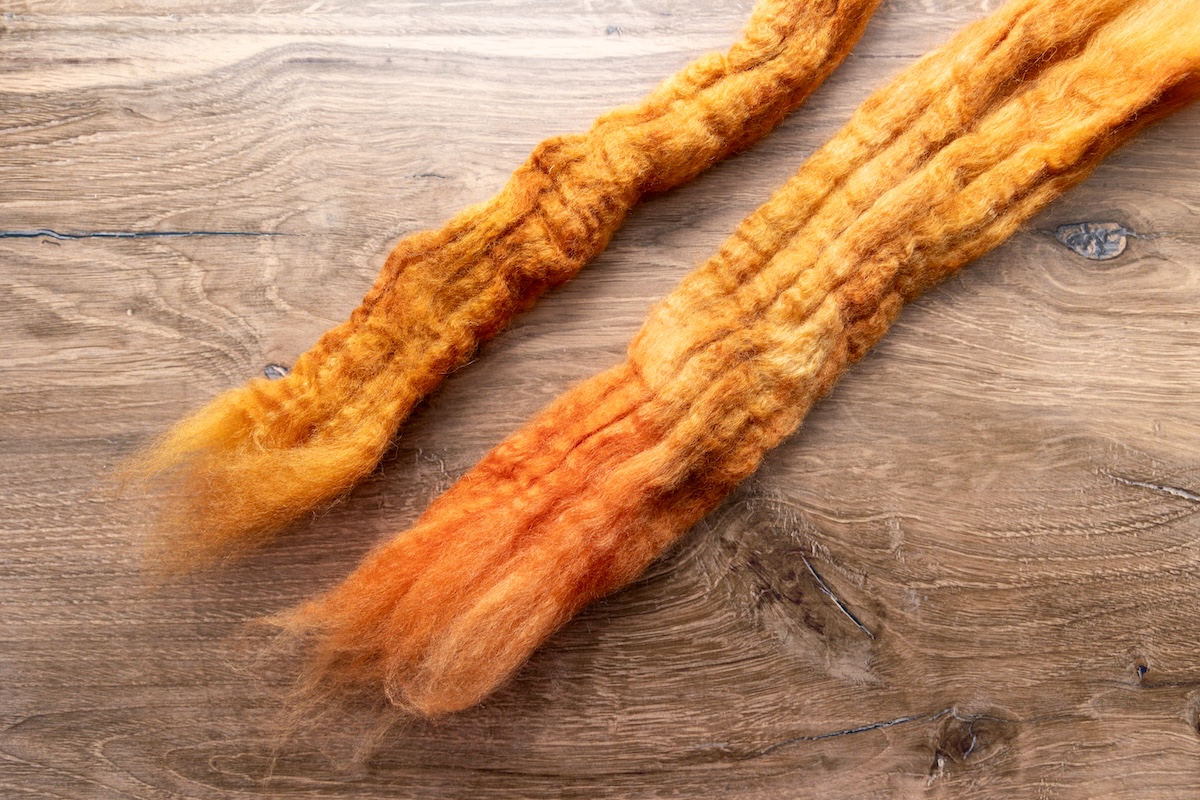
Adjustments at the Wheel
- Brake bands, whorls and pulleys. If your yarn or fibre pulls out of your hands when you’re spinning, try reducing the tension of your brake band in very small increments to see if this helps your fibre-pulling/breakage issue. (If you spin using a double drive system, you can decrease take-up by gently moving your flyer closer to the drive wheel using your wheel’s tension screw. Changing to a smaller whorl or pulley or swapping your drive band are additional options.) No matter the drive system, many experts recommend loosening the wheel’s tensioning entirely, then slowly increasing it again just until the wheel takes up your yarn slightly.
- Build evenly loaded bobbins. Yes, this is a real thing and not just for good looks and social media bobbin shots, especially when your wheel is flyer-driven, aka Scotch tension. Building your singles up to one side of the bobbin shifts its weight distribution and negatively impacts the efficacy of your take-up.
- Cross-lace your flyer. This lengthens the path your singles take from your hands up through the orifice and onto the bobbin, also providing more time for twist to accumulate. This trick is especially useful for bobbin-led (aka “Irish”) wheels and spinning wheels with few ratios, though it may be used on any drive system. If your flyer has hooks, simply cross-lace opposing ones, moving your yarn and re-lacing as needed. For hookless flyers, wrap once around the opposing flyer arm instead
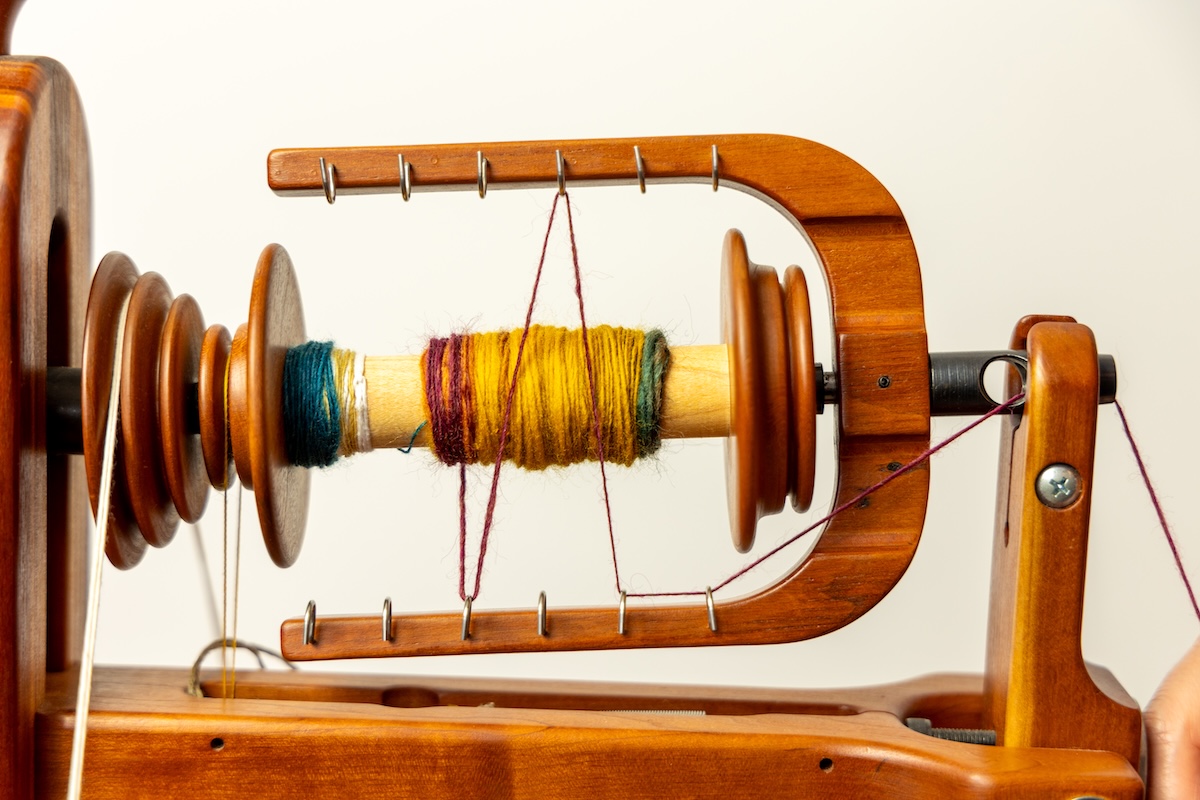
Finesse How the Yarn Takes Twist
Rather than rely solely on your wheel’s draw-in for your yarn-spinning management and risking broken-off fibre and yarn as a result, look for more subtle, indirect means of finessing twist buildup as you spin your singles. There are any number of ways to manipulate your twist, putting some much-needed ease on that tension. Working on any or all of the following skills can help with your fibre-pulling problems, turning you into a boss spinner in the process:
- Get to know the point of contact. This is the point just ahead of where twist meets each new make of your newly spun singles. If you’re using a worsted-style draw, your front hand should pinch and lengthen your fibres forward, guiding the yarn toward the wheel before fluidly sliding back to the point of contact and starting the next make.
- Practice slightly longer draws, especially those that utilize point-of-contact resistance. It’s harder to control twist with super-short draws, as twist tends to fight its way into the shorter drafting zone. In worsted/short draws, your fibre/back hand’s job is to loosely hold your fibre supply while keeping it organized, but utilizing longer, in-between draws can help you manipulate twist insertion by putting your back hand to use in pulling against the twist. Pulling against this point of contact will also work with a longer forward draw. Use the thumb and forefinger of your front hand to roll the twist into the attenuated strands of fibre, guiding it with your forefinger if necessary. You can choose to include back-hand pulling or not. Whether drawing backward or forward, engaging with the point of contact allows you to hold the draw for a beat if needed, manipulating twist buildup for a stable yarn without adding too much take-up to your spin. No matter your preference, pinch forward or draw backward with intention, and be sure to use consistent movements so you’re neither fighting with nor chasing after the moving twist.
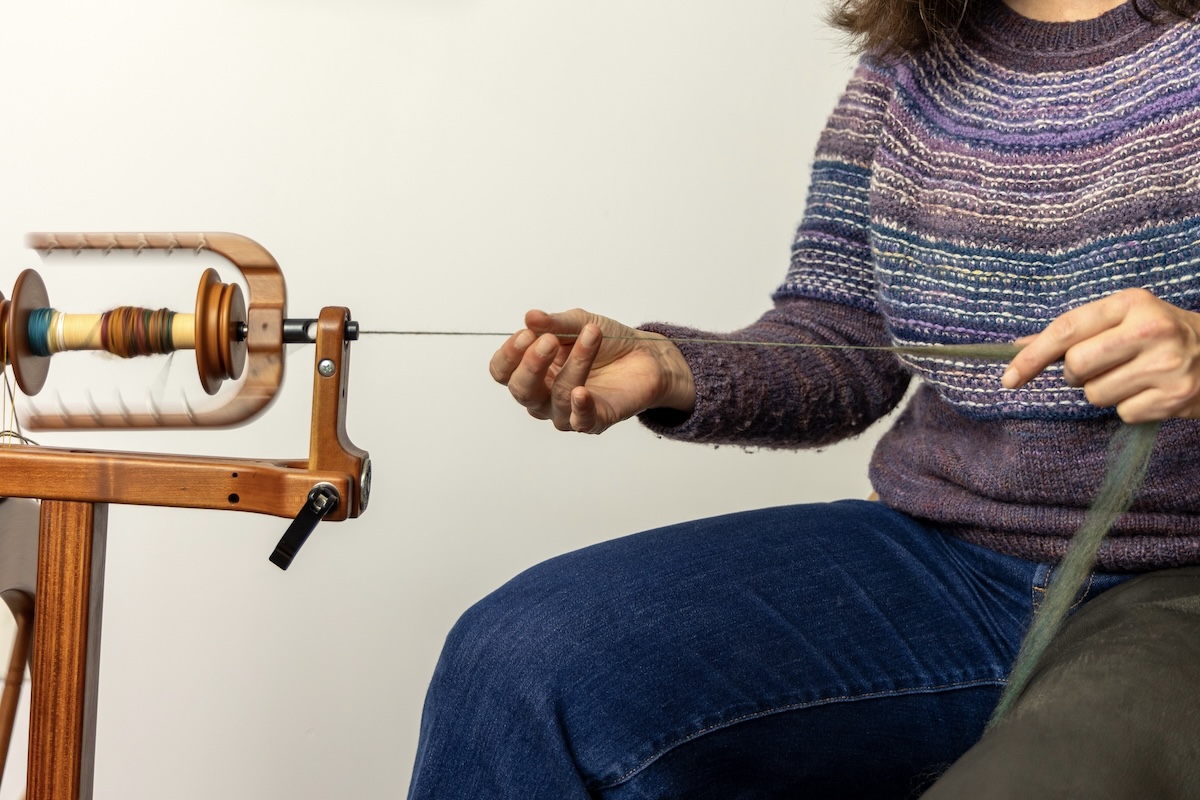
- Use your distance from the wheel and/or its placement to increase or decrease twist-building time. Sitting closer to the wheel provides less time for twist to accumulate before the yarn is taken up and wound onto the bobbin. Moving your seat farther back (but not far enough to impact your ability to treadle your wheel) provides a bit of extra time for twist to make its way into your drawn fibre and singles, provided your take-up isn’t too strong, of course. Adjusting the angle of your e-Spinner can do the same, since this angling acts like a lever or a spindle tip by locking added twist into the singles as they bounce against the side of the wheel’s orifice. For treadle wheels, sitting angled to the wheel or spinning with your singles working sideways across your lap can do the same. This is why some modern-day treadle wheels have adjustable flyer heads. Have a look at your wheel and think outside the box in terms of your approach to treadling it.
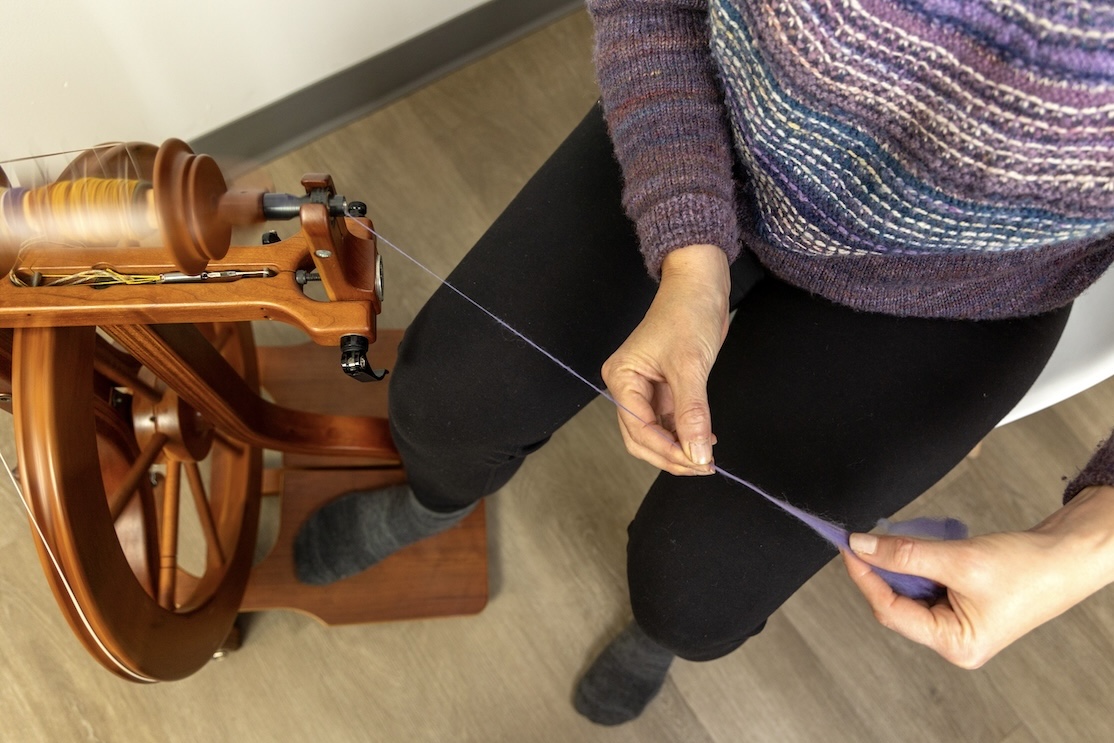
Practice Makes for Proficiency
Learning to spin with intention and control takes time and practice, and the one thing I know of that can help in understanding more technical-sounding topics is just plain doing the work from behind the wheel. The more spinning you do, the more intuitive the information becomes.
If you’re a member of the “too much tension” club, you’re not alone! Let us know how these tips impact your spinning, and please share your own methods for take-up management on the School of SweetGeorgia Community Forum or the SweetGeorgia Discord Channel.
Whether you’re just getting started with handspinning or expanding your skills, we invite you to come explore the range of online spinning courses at the School of SweetGeorgia! We’ve also compiled some helpful information in a downloadable PDF which can be used as a reference tool for anyone at the start of their spinning journey.
The post Stop Your Fibre from Pulling Away While You’re Spinning appeared first on SweetGeorgia Yarns.
Comments
Post a Comment